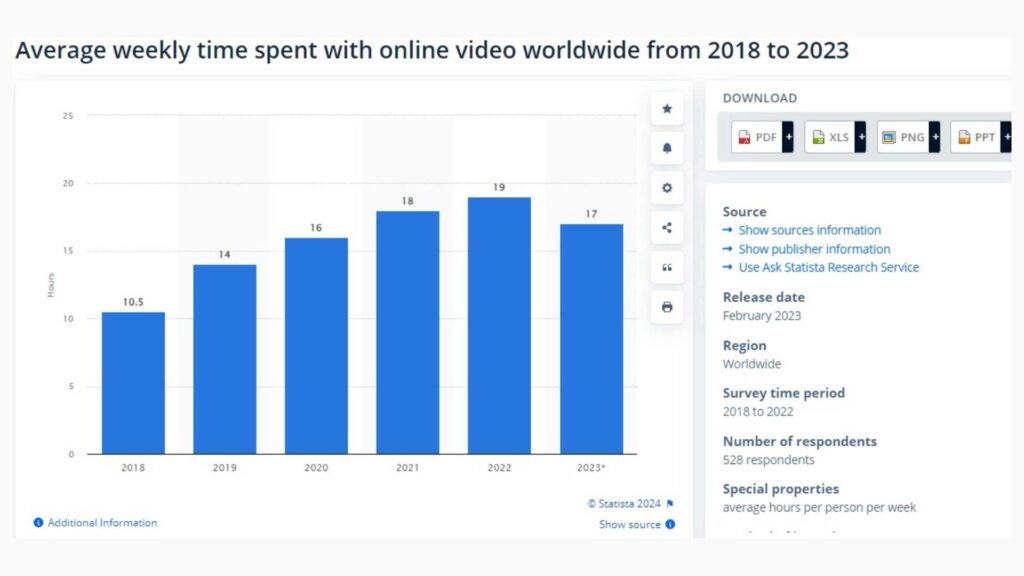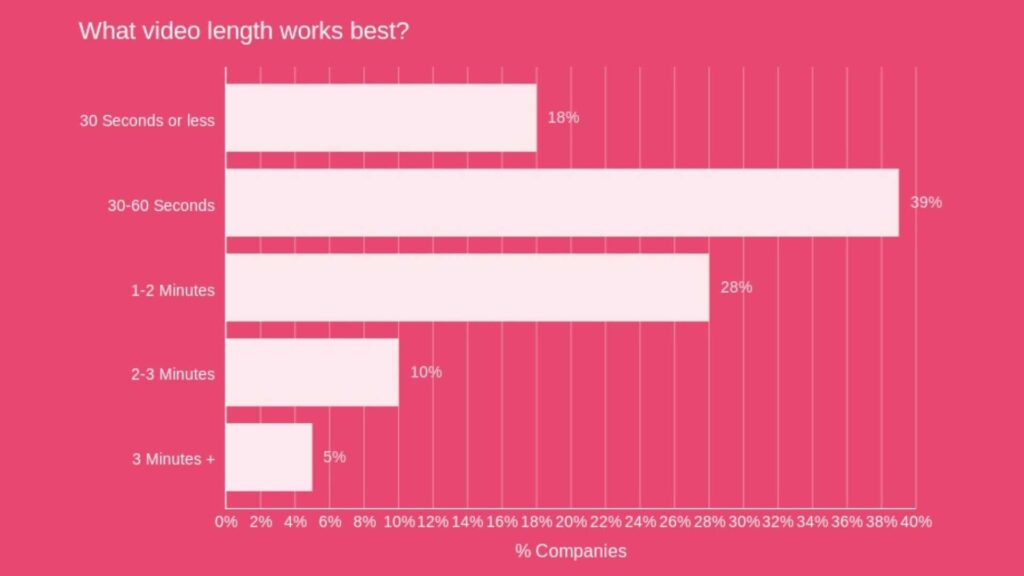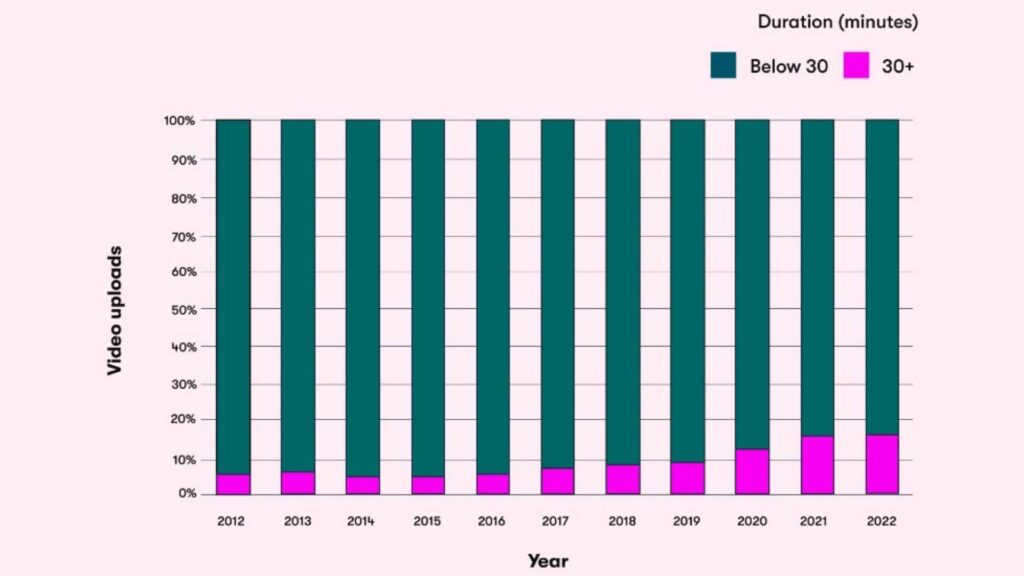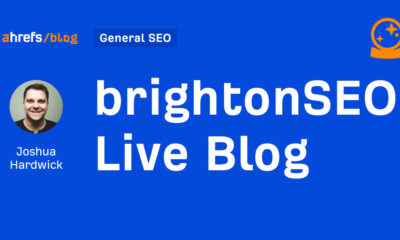MARKETING
8 Ways To Leverage AI To Improve Lead Generation

In today’s digital age, businesses are constantly seeking innovative ways to improve their lead generation strategies. Traditional methods can be time-consuming and may not always yield the desired results. However, with advancements in artificial intelligence (AI), businesses now have the opportunity to enhance their lead generation efforts and drive better outcomes. In this article, we will explore eight key ways to leverage AI to improve lead generation and propel your business forward.
Personalized Content Recommendations
AI-powered algorithms have the ability to analyze vast amounts of data to understand user preferences and behaviors. By leveraging AI, businesses can deliver personalized content recommendations to potential leads, increasing engagement and conversion rates.
AI algorithms can analyze a lead’s browsing history, social media activity, and other relevant data points to suggest content that aligns with their interests and needs. This targeted approach ensures that leads receive content that resonates with them, enhancing the overall customer experience and increasing the likelihood of generating quality leads.
Chatbots for Instant Engagement
AI-powered chatbots have revolutionized customer engagement by providing instant and personalized interactions. When integrated into lead generation strategies, chatbots can engage with website visitors, answer queries, and gather relevant information. Chatbots can use natural language processing to understand and respond to user inquiries, providing a seamless and efficient user experience.
By automating initial interactions, businesses can capture leads’ contact information and qualify them based on their responses. This not only streamlines the lead generation process but also ensures that leads receive prompt assistance, enhancing their overall experience with your brand.
Natural Language Processing for Lead Qualification
AI-powered natural language processing (NLP) techniques can help businesses automate lead qualification processes. NLP algorithms can analyze and extract information from leads’ responses, such as email inquiries or form submissions, to determine their level of interest and qualification.

Become A Certified E-Commerce Marketing Master
The Industry’s Most Comprehensive E-Commerce Marketing Certification For The Modern Marketer. Turn Products Into Profit, Browsers Into Buyers, & Past Purchasers Into Life-Long Customers.
By automating lead qualification, businesses can save time and resources while ensuring that only the most qualified leads are pursued further. NLP can help categorize leads based on their intent, sentiment, and specific criteria, enabling businesses to prioritize follow-up actions and improve the efficiency of their lead generation efforts.
Predictive Lead Scoring
Lead scoring is a critical aspect of AI lead generation, as it helps businesses prioritize and focus their efforts on the most promising leads. AI-powered predictive lead scoring takes this process to the next level by using machine learning algorithms to analyze historical data and identify patterns that indicate lead quality.
These algorithms can analyze a wide range of data points, such as demographic information, past interactions, and purchase behavior, to predict a lead’s likelihood of converting. By leveraging AI for lead scoring, businesses can allocate their resources more effectively and focus on leads with the highest potential, improving overall conversion rates.
Automated Email Campaigns
Email marketing continues to be a powerful tool for lead generation. However, manually managing email campaigns can be time-consuming and prone to human error. AI-powered solutions can automate various aspects of email marketing, such as email scheduling, personalization, and segmentation.
AI algorithms can analyze lead data to determine the most appropriate time to send emails, personalize email content based on individual preferences, and segment leads into targeted groups for more relevant messaging. By automating these processes, businesses can optimize their email campaigns, deliver personalized experiences to leads, and increase the chances of converting them into customers.
Voice Search Optimization
With the increasing popularity of voice assistants and smart speakers, optimizing lead generation strategies for voice search is becoming essential. AI can help businesses adapt their content and SEO strategies to align with voice search queries. AI-powered algorithms can analyze voice search patterns and understand the intent behind queries to provide relevant and accurate information.

By optimizing content for voice search, businesses can increase their visibility in voice search results and capture leads who prefer using voice assistants for information retrieval.
Intelligent Lead Scouting
AI can also be leveraged for intelligent lead scouting, which involves identifying and targeting potential leads that match a specific set of criteria. AI algorithms can analyze large amounts of data from various sources, including social media platforms, business directories, and public records, to identify leads that meet predefined characteristics.
This approach helps businesses identify new and untapped markets, discover leads that may have otherwise gone unnoticed, and expand their reach. By using AI for intelligent lead scouting, businesses can uncover new opportunities and increase their chances of finding high-quality leads.
Data Analytics and Insights
AI-driven data analytics tools provide businesses with powerful insights into lead generation strategies. These tools can analyze vast amounts of data in real-time, uncovering patterns, trends, and correlations that human analysts may overlook.
AI algorithms can identify the most effective channels for lead generation, analyze customer behavior, and provide actionable recommendations for improving lead conversion rates. By leveraging AI-powered analytics, businesses can make data-driven decisions, optimize their lead generation efforts, and continuously improve their strategies based on actionable
insights.

Leveraging AI can significantly enhance lead generation efforts and drive better results for businesses.
By using AI to deliver personalized content recommendations, implementing chatbots for instant engagement, utilizing NLP and voice search optimization, leveraging predictive lead scoring and scouting, automating email campaigns, and utilizing AI-driven data analytics, businesses can optimize their lead generation strategies, improve conversion rates, and ultimately drive business growth.
Embrace the power of AI and unlock its potential to transform your lead generation efforts into a more efficient and effective process.
MARKETING
Quiet Quitting vs. Setting Healthy Boundaries: Where’s The Line?

MARKETING
Microsoft unveils a new small language model

Phi-3-Mini is the first in a family of small language models Microsoft plans to release over the coming weeks. Phi-3-Small and Phi-3-Medium are in the works. In contrast to large language models like OpenAI’s ChatGPT and Google’s Gemini, small language models are trained on much smaller datasets and are said to be much more affordable for users.
We are excited to introduce Phi-3, a family of open AI models developed by Microsoft. Phi-3 models are the most capable and cost-effective small language models (SLMs) available, outperforming models of the same size and next size up across a variety of language, reasoning, coding and math benchmarks.
What are they for? For one thing, the reduced size of this language model may make it suitable to run locally, for example as an app on a smartphone. Something the size of ChatGPT lives in the cloud and requires an internet connection for access.
While ChatGPT is said to have over a trillion parameters, Phi-3-Mini has only 3.8 billion. Sanjeev Bora, who works with genAI in the healthcare space, writes: “The number of parameters in a model usually dictates its size and complexity. Larger models with more parameters are generally more capable but come at the cost of increased computational requirements. The choice of size often depends on the specific problem being addressed.”
Phi-3-Mini was trained on a relatively small dataset of 3.3 trillion tokens — instances of human language expressed numerically. But that’s still a lot of tokens.
Why we care. While it is generally reported, and confirmed by Microsoft, that these SLMs will be much more affordable than the big LLMs, it’s hard to find exact details on the pricing. Nevertheless, taking the promise at face-value, one can imagine a democratization of genAI, making it available to very small businesses and sole proprietors.
We need to see what these models can do in practice, but it’s plausible that use cases like writing a marketing newsletter, coming up with email subject lines or drafting social media posts just don’t require the gigantic power of a LLM.
Dig deeper: How a non-profit farmers market is leveraging AI
MARKETING
Navigating the Video Marketing Maze: Short-Form vs. Long-Form


Are you torn between using long-form or short-form videos for your small business marketing campaign? Well, you are not alone. Despite 89% of consumers wanting to see more brand videos, there is no one-size-fits-all answer about the ideal video length.
However, this should not deter you from creating an effective video strategy. In 2023, people watched an average of 17 videos per day, highlighting the influence of video content in today’s digital landscape.


Both short-form and long-form videos offer unique advantages and come with their set of challenges. Join me as I uncover the benefits and limitations of each video format to help you make informed marketing decisions.
What are Short-Form Videos?
Short videos typically range from 30 seconds to less than 10 minutes long. They are popular on social media platforms like TikTok, Instagram, Snapchat, and YouTube.
Short-form videos deliver brief yet engaging messages that quickly capture the viewer’s attention. Here are some popular types of short-form video content.
- TikTok Challenges
- Instagram Reels
- Snapchat Stories
- YouTube Shorts
- Twitter Video Ads
Benefits of Short-Form Videos
A previously cited report shows that 39% of marketers find short-form videos, ranging from 30-60 seconds long, more successful. The same study reports that 44% of customers prefer watching a short video to learn about a brand’s offerings.


So, it is evident that short-form videos have their benefits. Let’s take a closer look at some of them.
Attention-Grabbing
Short-form videos capture attention quickly, making them ideal for the fast-scrolling nature of social media platforms. Your audience is more likely to watch them in their entirety compared to longer content.
Cost-Effective Production
Creating short-form videos requires less time and resources compared to longer videos. As a small business owner with a limited budget, using short-form videos can be cost-effective.
Increased Engagement
Short-form videos engage viewers due to their crisp and concise nature. This results in more likes, comments, and shares that boost your content’s visibility and increase brand awareness.
Integrating short-form videos into your influencer marketing campaigns can further amplify your reach to new and diverse audiences.
Highly Shareable
Short videos are highly shareable. This makes it more likely for your viewers to share them, increasing their virality.


Want to get certified in Content Marketing?
Leverage the tools and channels to predictably and profitably drive awareness, leads, sales, and referrals—EVERYTHING you need to know to become a true master of digital marketing. Click Here
There are multiple benefits of adding video to your website including increased engagement, improved SEO, and enhanced user experience.
Limitations of Short-Form Videos
While short-form videos offer many advantages in content marketing, they also present some challenges.
Limited Message Depth
Due to their brief duration, short-form videos may struggle to convey complex or detailed messages. Longer videos might be more suitable if you need to communicate intricate information.
Competition for Attention
Standing out on platforms flooded with short-form video content can be challenging. You must create content that stands out to avoid becoming lost in the sea of other videos.
Shorter Lifespan
Short videos may lose their relevance with time. They can quickly get buried in users’ feeds, leading to a shorter visibility and engagement period than longer, evergreen content.
This means you must consistently create short-form videos to maintain audience interest over time.
Limited SEO Impact
Short-form videos may be more challenging to optimize for search engines than longer, more keyword-rich content. This can affect the discoverability of your content outside the social media scene.
What are Long-Form Videos?
Long-form videos are typically longer, ranging from a few minutes to several hours. They extend beyond a few minutes to several hours, providing ample time for in-depth topic exploration and detailed content.
These videos are particularly suitable for educational content, product demonstrations, and narrative-driven storytelling. Long-form videos are common on platforms like YouTube and Vimeo. Common types of long-form video content include:
- YouTube Series
- Webinars
- Educational Tutorials and Courses:
- Behind-the-Scenes Content
- Interviews and Conversations
Advantages of Long-Form Videos
Long-form video content is the fastest-growing segment, with videos above 30 minutes experiencing tremendous growth over the years. Let’s explore some of the benefits behind this growth.


Establishes Expertise and Credibility
Long-form videos allow you to provide in-depth information about various subjects, establishing your brand as an authority. Potential customers will likely trust and rely on your insights when you consistently deliver valuable content.
Builds Strong Audience Connections
The more your audience watches your videos, the more they become familiar with your content and brand. This consistent engagement promotes trust and loyalty, helping you create deeper connections with your audience.
Provide SEO Optimization Opportunities
Long-form videos keep your audience engaged for a longer duration than short ones. This signals search engines that your content provides value, resulting in higher rankings and increased visibility.
Besides, these videos provide opportunities to optimize for relevant keywords. This Attrock guide offers more insights into the value of SEO for your small business.
They Are Sustainable
Unlike short videos, well-produced and valuable long-form videos have an extended shelf life. They can continue to attract views and engagement over an extended period, contributing to a sustainable content strategy.
Instagram reels are also a part of short videos and you can get benefits from this platform by integrating it with your website. You can learn how to embed Instagram Reels on websites and get extra benefits from your Reels.
Drawbacks of Long-Form Videos
Despite their benefits, long-form videos also have certain limitations, including:
Attention Span Challenges
Between distractions, juggling tasks, and information overload, user attention span quickly diminishes. Viewers may lose interest and disengage from your long video before its conclusion.


Are You Ready to Master Social Media?
Become a Certified Social Media Specialist and learn the newest strategies (by social platform) to draw organic traffic to your social media sites.
Complex Production Process
Creating high-quality long-form videos requires more resources, including time, equipment, and skilled personnel. This can be disadvantageous, especially for small businesses with limited budgets.
Platform Limitations
Some social media platforms and video hosting sites may limit video length, making it challenging to distribute long-form video content. You may then be forced to repurpose your content to suit various platforms.
Short-Form or Long-Form Videos: Which Are Better?
Now that you know the benefits and limitations of each format, which one should you choose? Short-form or long-form videos?
Well, it all boils down to considering several factors, such as:
Content Objectives
What do you want to achieve from your video marketing campaign? Short-form videos are highly effective for quick brand exposure and generating buzz. Long-form videos, on the other hand, contribute to a more in-depth understanding of the brand.
Target Audience Preferences
Audiences with short attention spans likely prefer short-form videos, while long-form videos appeal to those seeking a more immersive experience.
Similarly, short-form videos may appeal more to younger audiences, while older demographics may prefer the depth of long-form content.
Platform Dynamics
Various platforms support different content formats. Short-form videos are well-suited for platforms like TikTok, Instagram, and Snapchat. On the other hand, platforms like YouTube and Vimeo are better for hosting longer videos.
Industry Type
Short-form videos would be ideal if your industry thrives on trends, entertainment, and quick messages. However, long-form videos are effective for industries requiring in-depth explanations or educational content.
Bottom Line
Ultimately, choosing short-form or long-form videos depends on your business’s specific needs and goals. Since both formats have advantages and limitations, making a choice may prove difficult.
However, it doesn’t have to be an uphill task. The key lies in recognizing when to incorporate each video format into your marketing strategy. Understanding your audience and its needs allows you to combine both formats strategically, maximizing the benefits of each.
Continuously analyze performance metrics and adapt your video marketing strategy accordingly to ensure optimal engagement and conversion rates.
-

 MARKETING6 days ago
MARKETING6 days agoEffective Communication in Business as a Crisis Management Strategy
-

 SEARCHENGINES7 days ago
SEARCHENGINES7 days agoGoogle Won’t Change The 301 Signals For Ranking & SEO
-

 SEO6 days ago
SEO6 days agobrightonSEO Live Blog
-

 PPC6 days ago
PPC6 days ago9 Ecommerce Trends to Boost Your Business in 2024
-

 SEO7 days ago
SEO7 days agoHow To Write ChatGPT Prompts To Get The Best Results
-

 SEO4 days ago
SEO4 days agoGoogle March 2024 Core Update Officially Completed A Week Ago
-

 WORDPRESS5 days ago
WORDPRESS5 days ago9 Best WooCommerce Multi Vendor Plugins (Compared)
-
SEARCHENGINES5 days ago
Daily Search Forum Recap: April 25, 2024

















